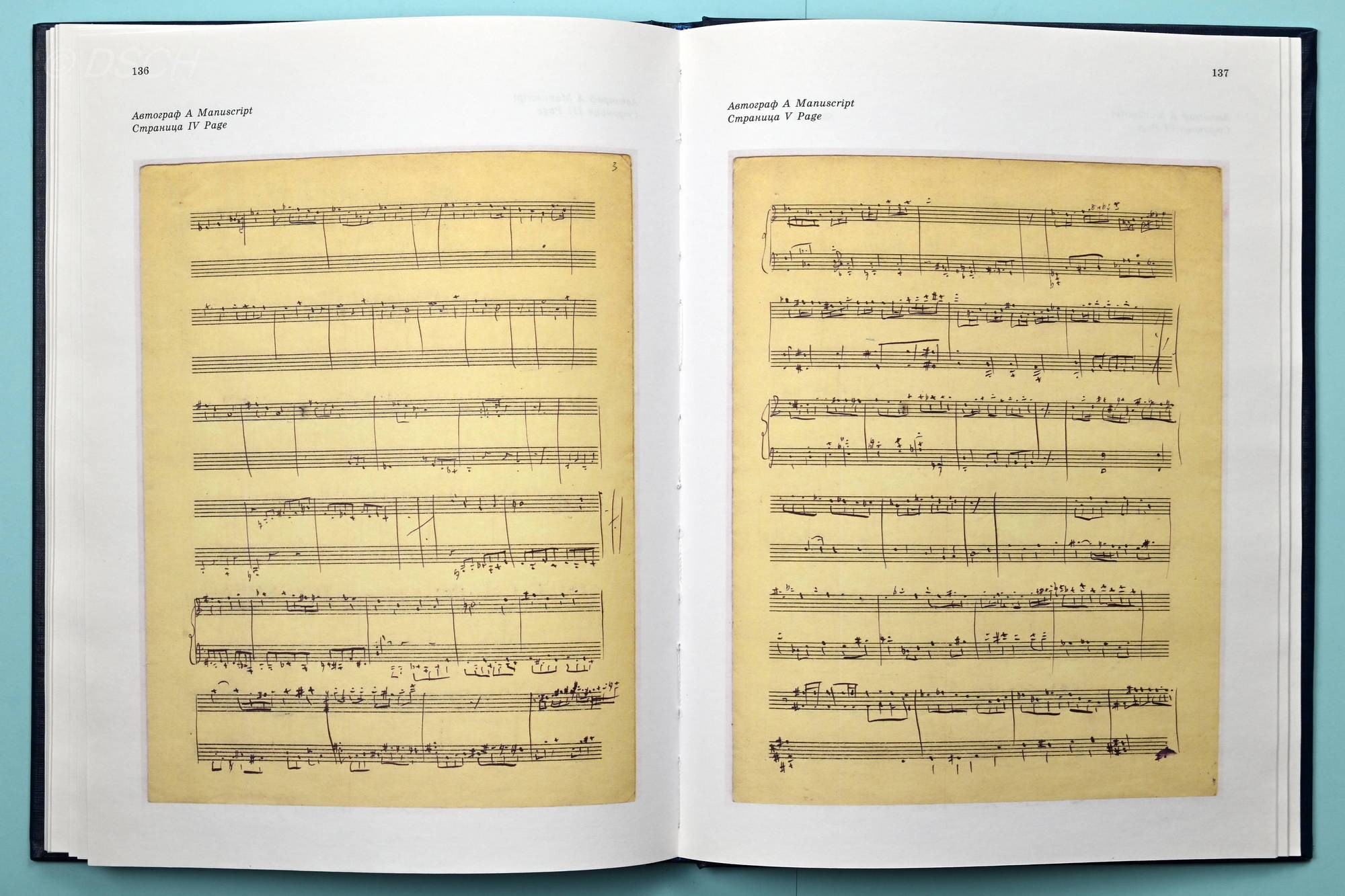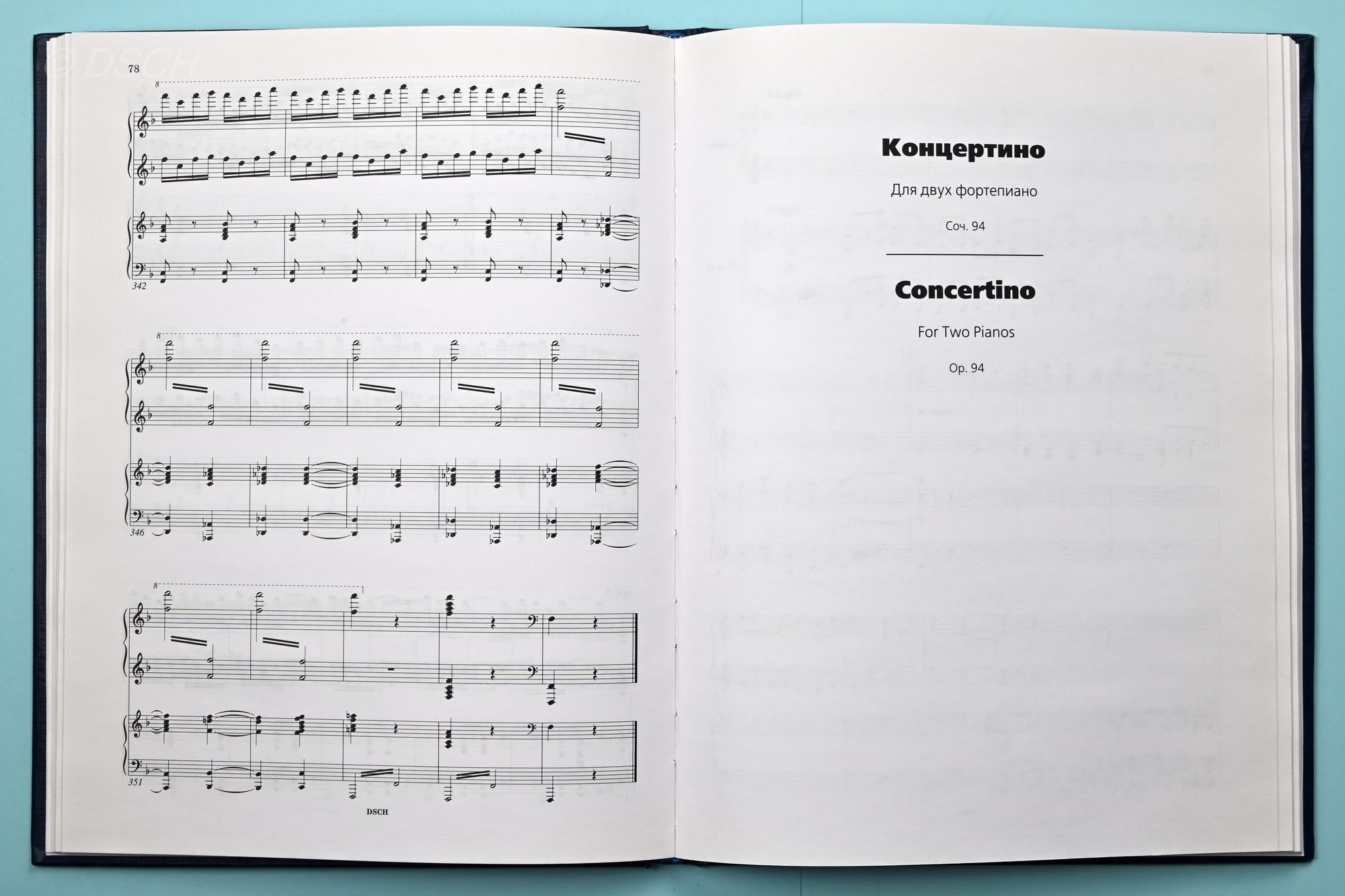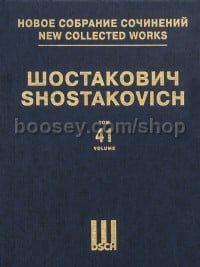Piano Concerto No. 2, op. 102 2-Piano Reduction (New Collected Works Volume 41)
Piano Concerto No. 2, op. 102 2-Piano Reduction (New Collected Works Volume 41)
* Estimated price converted from UK retail price
Click below to view music sample pages


The author’s arrangement for two pianos of Concerto, op. 102, was first published in 1957 at almost the same time as the score.
The author’s manuscripts of the score and the piano score contain rather a large number of discrepancies which at times are rather considerable. The differences in the parts of the solo piano are particularly significant. In some cases, the Piano solo part is written in less detail in the score than in the arrangement, probably because the composer thought some of the details were too minor for the conductor and only wrote them in the music text of the arrangement. But in other cases, the changes in the Piano solo part possibly arose during rehearsals, so the author only made them in the arrangement, without also making them in the score.
An attempt to unify the score and the piano score was made when preparing the corresponding volumes of Shostakovich’s Collected Works put out by Muzyka Publishers at the beginning of the 1980. At this time, the text was collated once more with the author’s manuscripts and all the lifetime editions of the Concerto. the notes in the copy of the first edition of the score belonging to Shostakovich and the audio recording of the Concerto performed by the composer himself, which was done in 1958, were also taken into account. (These author’s documents were first referred to for clarifying the text during preparation of the 1982 edition.) But unification was not carried out to the fullest extent. Moreover, due to the censorship that existed at that time, the dedication to Maxim Shostakovich, who emigrated from the Soviet Union in 1981, was not printed in either the score or the piano score.
In this edition, the Piano solo part largely follows the text of the author’s arrangement for two pianos, but whenever possible its special features in the score were also taken into account. The most significant discrepancies in the Piano solo part are noted in the comments. All the comments, apart from those specifically specified, relate to the Piano solo part.
There is a note in the editions of the score and piano score of the 1980s indicating the length of the work—around 16 minutes. This note does not feature in the author’s manuscripts or lifetime editions of the Concerto.
The bar-by-bar comments take into account the “Notes” from Volume 12 of Collected Works (1982) and the Comments of Volume 40 of New Collected Works (2009). Some of the most frequent discrepancies relate to replacement of the crotchet with a quaver and a quaver rest (or vice versa). These discrepancies are usually not specified in the bar-by-bar comments. There is quite a large number of differences between the Piano II part and the score with respect to dynamic nuances, placement of ties, and so on. These differences were most likely dictated by the specifics of the performance of the two pianos. For the most part, they are not stipulated in the comments either.
The fair author’s manuscript of the Concertino for two Pianos, op. 94, is kept in the Glinka State Central Museum of Musical Culture, and the rough draft is kept in Dmitri Shostakovich’s Archive. The Concertino was first published in 1955 by the USSR Music Foundation. It came out no later than September, which is shown by the author’s presentation inscription on the copy kept in Dmitri Shostakovich’s Archive: “To dear Maxim Shostakovich, first performer of this composition, from your loving D. Shostakovich. 26/IX 1955, Moscow”. Subsequently, during the composer’s life time, the Concertino was republished several times (in 1966, 1970, and 1975) by Muzyka Publishers.
There are rather a large number of various minor differences between the 1966 edition (edited by Elena Khoven) and the author’s manuscript and the 1955 edition, which is very close to the author’s manuscript. In particular, in the edition edited by Elena Khoven, a well-known pedagogue (she was Maxim Shostakovich’s professor at the Central Music School), great attention is given to instructional and didactic aspects, for example, to the fingering, which is totally absent in the author’s manuscript. the later editions reproduce Elena Khoven’s edition.Unfortunately, there is no information about the extent to which this edition was coordinated with the author.
In 1983, another edition of the Concertino came out in Volume 13 of Dmitri Shostakovich’s Collected Works (Muzyka Publishers, Moscow), which was also based on the 1966 version. this edition, which was the least successful of all, totally left out the composer’s rehearsal numbers, which are vital for the performers, from the music text without any explanation.
When preparing this publication, the texts of the author’s manuscript and first lifetime edition were used. In some cases, versions of the texts in the 1966 and later editions were taken into account.
This ambitious series by DSCH, the exclusive publisher of the works of Dmitri Shostakovich, when complete, will run to 150 volumes.
Based on authentic manuscripts, accompanied by commentaries in Russian and in English, each volume contains new engravings, articles relating to the history of the compositions, facsimile pages of Shostakovich's manuscripts, outlines, and rough drafts.
Divided into 15 different "series" or genres, the edition will include nearly all the original works of the composer, and his instrumentation of music by Domenico Scarlatti, Beethoven, Schubert, Schumann, Mussorgsky, Rimsky-Korsakov, Johann Strauss, Youmans, Braga, Tishchenko, and others.
25% of the New Collected Works will be made up of previously unpublished material: over 80 of his works are being published here for the first time. Many of these previously unknown works could not be published or performed during the composer's lifetime for ideological reasons.
The fifteen "series" within the edition comprise:
I: Symphonies (vols 1-30)
II: Orchestra Compositions (vols 31-37)
III: Instrumental Concertos (vols 38-49)
IV: Compositions for the Stage (vols 50-67)
V: Suites from Operas and Ballets (vols 68-72)
VI: Compositions for Choir and Orchestra (With or Without Soloists) (vols 73-83)
VII: Unaccompanied Choral Compositions/Arrangements of Russian Folksongs (vols 84-86)
VIII: Compositions for Solo Voice(S) With Orchestra (vols 87-90)
IX: Chamber Compositions for Voice and Songs (vols 91-97)
X: Chamber Instrumental Ensembles (vols 98-105)
XI: Instrumental Sonatas(vols 106-108)
XII: Piano Compositions (vols 109-115)
XIII: Incidental Music (vols 116-121)
XIV: Film Music (vols 122-145)
XV: The Works of Other Composers, Instrumentation by Shostakovich (vols 146-150).




